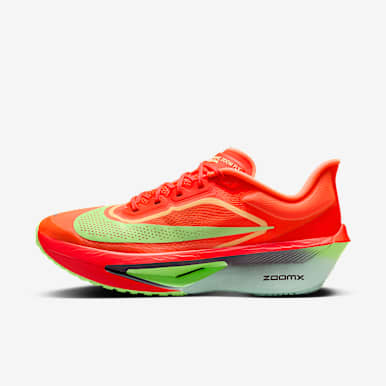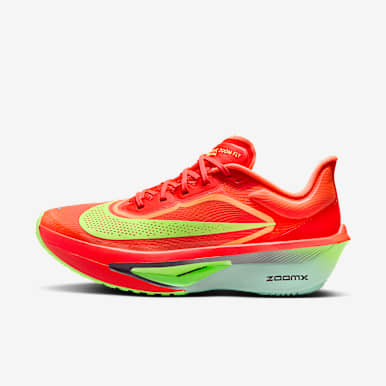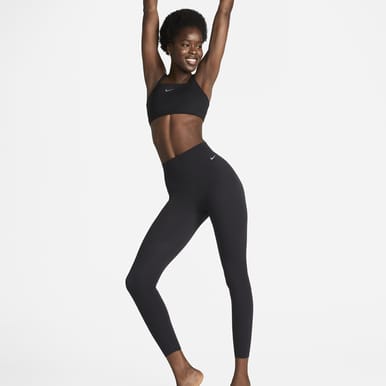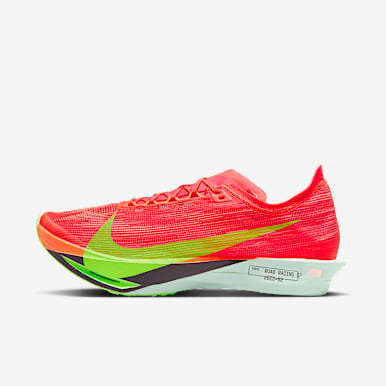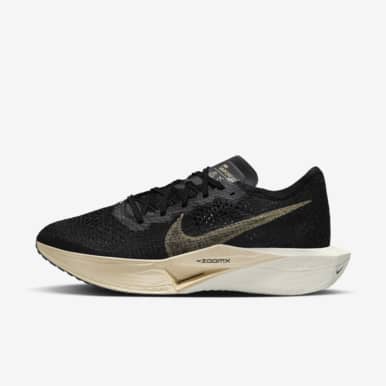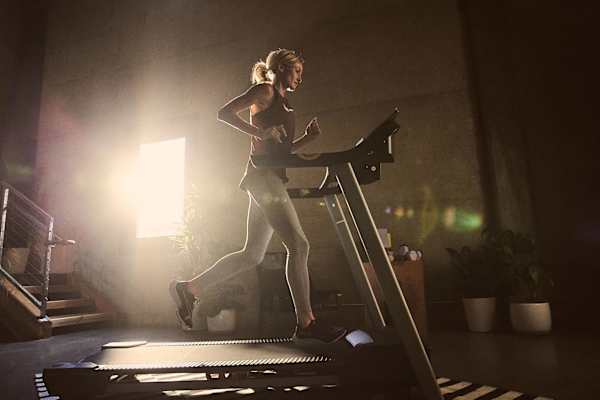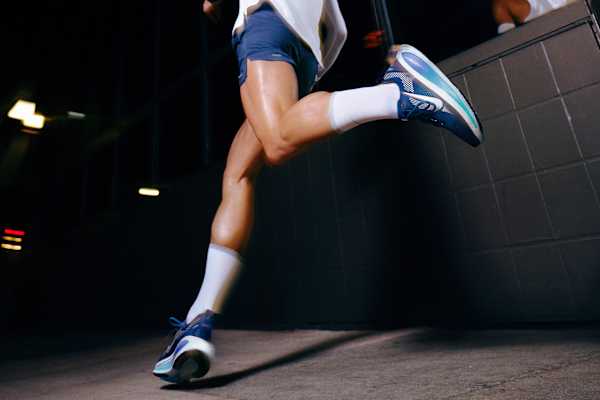Everything you need to know about the decathlon in athletics
Sport & activity
This beginner's guide to the decathlon unpacks the 10 events that make up the athletics competition.

As the name suggests, the decathlon consists of 10 athletics events completed over a two-day period. On the first day, athletes compete in a 100-metre dash, long jump, shot put, high jump and 400-metre run. The second day includes 110-metre hurdles, discus throw, pole vault, javelin throw and a 1,500-metre run.
Looking to learn more about the decathlon and its 10 events? Here's everything you need to know.
(Related: A beginner's guide to all of the events in athletics)
Decathlon history
The decathlon has roots all the way back in ancient Greece.
"The decathlon originated from the ancient pentathlon events that took place at the ancient Greek Olympics", said Dan O'Brien, the 1996 Olympic decathlon champion and former world-record holder. "At that time, the pentathlon events involved five disciplines—long jump, discus throw, javelin throw, sprint and a wrestling match. This sport was introduced in the Olympics during 708 BC".
Since then, the competition has evolved. The decathlon, as it exists today, was introduced at the 1912 Stockholm Olympic Games.
"In regulated competition", O'Brien said, "the decathlon is known for having a history of complex scoring systems that have changed six times since 1912". The final tweaks to the scoring were made in 1984 and have been in place since.
According to World Athletics, the changes implemented in 1984 were intended to provide a method for comparing athletes' performances in different events. After each event, an athlete earns a designated number of points based on their performance. At the end of the competition, the athlete with the most points is declared the winner.
Note: the decathlon is only competed in the men's category in athletics. In the women's category, athletes compete in the heptathlon, which includes seven events. According to World Athletics, women first competed in the five-event pentathlon at the 1964 Olympic Games in Tokyo. This event was replaced by the seven-event heptathlon at the 1984 Olympic Games in Los Angeles.
(Related: What is steeplechase? Everything you need to know about the athletics event)
Day 1
1. 100-metre run
Location: on the track
Event overview: the first event of the decathlon is a sprint.
In this race, athletes set up in starting blocks. After the starting gun signals the beginning of the race, they sprint 100 metres to the finishing line, while staying in their assigned lane.
O'Brien explained there are three phases of the 100-metre run:
- A quick-block start, propelling runners into the sprint
- Transition to upright running
- Reach and hold top-end speed through to the finishing line
2. Long jump
Location: typically on the infield, over a runway and sandpit, which the athletes jump into
Event overview: formerly known as the broad jump, the long jump tests an athlete's horizontal jumping ability.
In the long jump, athletes take a running start on a 40-metre runway before jumping as far as possible into a sandpit, without crossing a foul line at the end of the runway. To successfully execute the long jump, O'Brien said athletes must master their speed and timing on the jump.
"Being a good sprinter provides a speedy run-up and a perfectly timed jump is a must", O'Brien said.
(Related: Everything you need to know about the triple jump in athletics)
3. Shot put
Location: throwing circle
Event overview: the first throwing event of the decathlon, the shot put requires athletes to throw a round, metal ball as far as they can with one hand.
The metal ball (the shot) weighs 16 pounds (7.26 kilogrammes). According to World Athletics, the shot cannot drop below the athlete's shoulders and must land inside a designated 35-degree landing sector. As they gear up to throw, athletes rest the shot close to their necks, holding it with one hand.
Two techniques dominate the shot put: the glide technique and the rotational technique. In the former, an athlete tucks the shot put under his chin and clavicle for an explosive launch, taking two big, single-leg pushes to accumulate power. This is a linear technique and doesn't involve spinning. Conversely, the rotational technique involves rotating the legs and upper body to propel the launch.
4. High jump
Location: typically on the infield, in a designated jumping area with a crash pad for athletes to land on
Event overview: the high jump tests an athlete's vertical jumping skills.
In the high jump, athletes run towards a bar placed horizontally over a soft crash pad, where they land. Jumpers launch up and over the bar, typically head-first and facing upwards, with their back arched.
If the athlete knocks over the bar while attempting to clear it, the jump is considered a failed attempt.
5. 400-metre run
Location: on the track
Event overview: the 400-metre dash tests both speed and stamina.
In the 400-metre race, athletes run one full lap around the track as fast as possible.
The last event of the first day of the decathlon, the 400-metre run requires athletes to muster their physical and mental strength. Athletes line up in staggered positions, launch out of starting blocks and run a full lap of the track, remaining in their designated lanes.
Day 2
1. 110-metre hurdles
Location: on the track
Event overview: during this race, athletes cover a 110-metre distance on the track while jumping over 10 hurdles, each measuring 42-inches (106.5cm approx.) high.
Athletes start in blocks and remain in their designated lanes for the duration of the race. According to World Athletics, there are 13.72 metres of distance to the first hurdle, 9.14 metres between hurdles thereafter and 14.02 metres from the final hurdle to the finishing line.
"It's an all-out sprint with barriers in the way", O'Brien said.
While athletes are not disqualified if they clip or knock over a hurdle, doing so can cause them to slow down. If a hurdler steps out of their lane during a race, they can be disqualified.
2. Discus
Location: throwing circle
Event overview: the second throwing event of the competition, discus is an event in which athletes spin and throw a metal disc as far as possible from a throwing pit.
The disc weighs 4.4 pounds (2 kilogrammes). While the discus is lighter than the shot put, the event challenges throwers to hone their throwing technique, which involves spinning around one-and-a-half times in a circular throwing area before releasing the disc into the air.
The athlete throws the disc into an area called the landing sector, which extends from the throwing circle at a 40-degree angle in a cone shape.
(Related: Everything you need to know about the discus throw in athletics)
3. Pole vault
Location: typically on the infield, in a designated jumping area, with a runway and a crash pad for athletes to land on after clearing a high bar
Event overview: the objective of the pole vault is to sprint down a runway holding a long, flexible pole made from fibreglass or carbon fibre, then place one end of the pole into a box on the ground, vaulting into the air over a high bar.
The length of the pole ranges from 10 to 17 feet in length (3 to 5 metres approx.) depending on skill level and they have different thicknesses, according to the athlete's weight and ability. During each attempt, athletes run full speed down a runway, use the pole to vault their bodies over a bar set high in the air and land on their backs on the crash pad—all without knocking down the bar.
4. Javelin
Location: javelin throwing area, which includes a runway and a landing sector
Event overview: in the third throwing event in decathlon, athletes throw the javelin, a metal-tipped spear, as far as possible. They hold the javelin with one hand, with the pinky finger towards the tip of the javelin.
Throwers begin with a running start on a runway, then do a series of crossover steps before planting their foot and throwing the javelin as far as possible. For the throw to be counted, the athlete must not cross a foul line at the end of the runway as they're throwing the javelin.
According to World Athletics, athletes cannot turn their backs to the landing area at any stage during the approach and throw—or the throw will not count. Competitors must also throw the javelin over the upper part of their throwing arm and the javelin must land tip first and within the marked landing sector.
5. 1,500-metre run
Location: on the track
Event overview: known as the metric mile, the last event covers 1,500 metres, three-and-three-quarters laps around a 400-metre track.
The 1,500-metre run is considered a middle-distance race—not a sprint but not quite a long-distance event. Athletes begin the race in a bunched start—not in designated lanes—and start standing up rather than in starting blocks.
Decathlon equipment
With 10 distinct events, decathletes need a good amount of equipment to get competition-ready.
"Shoes, shoes and more shoes", O'Brien said. "There is a shoe for every event".
Nike offers specialised performance shoes for distance running, sprinting, throwing and jumping, as well as multi-event athletics shoes. The versatile Nike Zoom Rival multi-event spikes offer heel cushion and a lightweight, durable upper that's well-suited for sprints, hurdle events, jumps and pole vault.
O'Brien said that beginners typically do not need their own shot, disc, javelin or pole-vault pole but experienced athletes tend to own these eventually.
Words by Emily Shiffer



